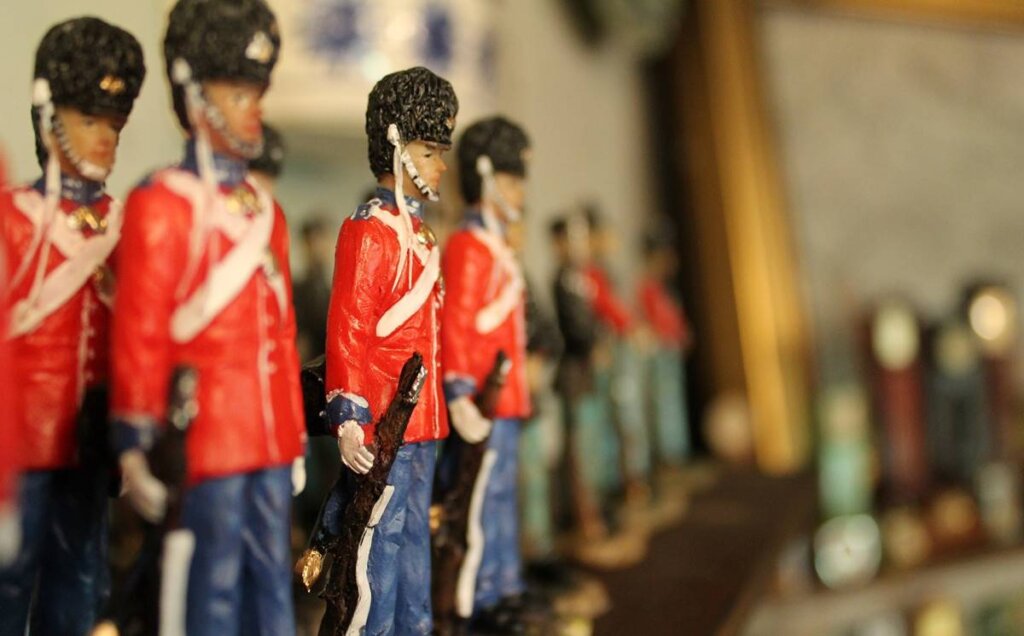Teachings From "The Steadfast Tin Soldier" by Hans Christian Andersen


Written and verified by the psychologist Valeria Sabater
They say that Hans Christian Andersen was the son of a shoemaker and a washerwoman and that this marked him forever. Indeed, his humble origins allowed him to make contact with the underbelly of society and understand the deepest recesses of the human being. During one period of his life, he even had to beg. He found shelter in his imagination to escape this unfortunate reality.
An avid reader and endowed with an exceptional artistic capacity, Andersen managed to publish his first poem at the age of twenty. It was entitled The Dying Child. As a matter of fact, hardship, heartbreak, and adversity underpinned a great deal of his work. Probably because his own existence was, for a time, fraught with deprivation and sadness.
Over time, Andersen’s classic tales have been subtly altered to make them less cruel. That’s because it was considered that the messages they offered weren’t particularly suitable for children born in the last two centuries. The Steadfast Tin Soldier is one such story that’s worth recovering to explain the teachings it contains.
“When we get to the end of the story, you will know more than you do now.”
-Hans Christian Andersen-

The Steadfast Tin Soldier
The tin soldier came to life in a cardboard box with twenty-four of his brothers. They were all seasoned soldiers, perfectly molded in beautiful colors. However, he had a flaw, he was missing a leg. The figurines had been cast from an old tin spoon, but when it was time to cast him, there wasn’t enough material left.
He was happy in his home for a while. All the little soldiers were placed around a cardboard castle. At the door, was a beautiful ballerina standing made of paper standing on one leg. The little tin soldier was fascinated by her, to such an extent that his cold tin heart instantly started beating for her. He fell in love immediately, particularly as he thought that the ballerina was missing a leg like him.
However, the happy times didn’t last long. On one occasion, he was set on the window sill and a gust of wind blew him onto the street. The boy who owned him, eager to get his soldier back, went looking for him. But, although he didn’t see him, he nearly stepped on him. The little soldier, stoic as ever, didn’t yell. He stayed there for a while until two children from the neighborhood found him.
The unfortunate adventures of the imperturbable little soldier
The two children who found the hapless tin soldier devised a plan, to build a paper boat for him and set it sailing in the gutter. The boat washed up in a storm drain where a rat was waiting and asked him to pay a toll. The boat sailed on and ended up in a canal where a fish swallowed the little soldier.
That seemed to be the end of the little lead man, but fate meant the fish was caught, cut open, and ended up being served as dinner for the family of the boy to whom he belonged. He was back home with his beautiful ballerina and twenty-four siblings.
However, his happiness was short-lived. The boy threw him into the fire for no apparent reason. The tin soldier didn’t know what was happening… Why was he melting? Nevertheless, he steadfastly continued to gaze at the little ballerina. Suddenly, a gust of air carried her over to the fire and she was instantly consumed by the flames.
The next day, among the remains of the embers and ashes, the maid found a little tin heart.
The tin soldier lives through a series of tragic episodes but never gives in.

The lessons from the story
There have been many publications of this Hans Christian Andersen tale. Sometimes, the title has been changed. It’s been called The Tin Soldier, The Brave Tin Soldier, and, more commonly, The Steadfast Tin Soldier. But, was our protagonist a brave character? Let’s find out.
Destiny can’t be controlled
As a matter of fact, the little tin soldier doesn’t even have a chance to be brave. He simply faces everything that life brings him. Indeed, no event is the result of his own action or inaction. Fate rules. Chance and fatality cause the events that push and pull him in all directions and he can do nothing about it.
This is quite strange. After all, he’s a tin soldier… Wouldn’t he be destined for combat, fighting, and confrontation? Not in this case. Not in the story of Hans Christian Andersen. One of the lessons we learn from him is that, in life, there’s not always the possibility or opportunity to be brave or to act.
Pain tolerance and the acceptance mechanism
The tin soldier is an example of stoicism. Stoicism is characterized by acceptance. The little soldier accepts each circumstance that comes his way. He doesn’t even scream out when he’s slowly melting in the fire.
Therefore, his character is an example of the difficult art of acceptance in the midst of adversity.
Limitations aren’t always the reason behind misfortune
The first thing we discover in Andersen’s story is that the protagonist has a limitation: he’s missing a leg. There was no lead left when they made him, so the little man is different from his regimental mates. But, does this fact have an influence on the difficulties to which he’s subjected? No.
In fact, his limp neither hinders him nor acts as an advantage. A soldier with two legs would’ve gone through exactly the same thing. In much the same way, in our lives, many of the defects that we believe we have, in reality, have no impact on what happens to us.
“He felt a terrible heat, but whether it came from the flames or from his love he didn’t know.”
What remains is our essence
Undeniably, this story has a sad outcome. However, it also includes a message. In fact, the death of the tin soldier symbolizes a spiritual rebirth, the one in which his true essence remains, that of love.
Despite everything that might happen to us, we must always preserve what gives us strength, meaning, and transcendence. Love is that indestructible material that must always endure.
All cited sources were thoroughly reviewed by our team to ensure their quality, reliability, currency, and validity. The bibliography of this article was considered reliable and of academic or scientific accuracy.
- Andersen, Jens (2005) [2003]. Hans Christian Andersen: A New Life. New York, Woodstock, and London: Overlook Duckworth. ISBN 978-1-58567-737-5.
- Taylor, J. (1971). The psychology of Hans Christian Andersen’s “Little Tin Soldier.” Menninger Perspective, 2(6), 13–16.
- Wullschläger, Jackie (2002) [2000]. Hans Christian Andersen: The Life of a Storyteller. Chicago: The University of Chicago Press.
This text is provided for informational purposes only and does not replace consultation with a professional. If in doubt, consult your specialist.








